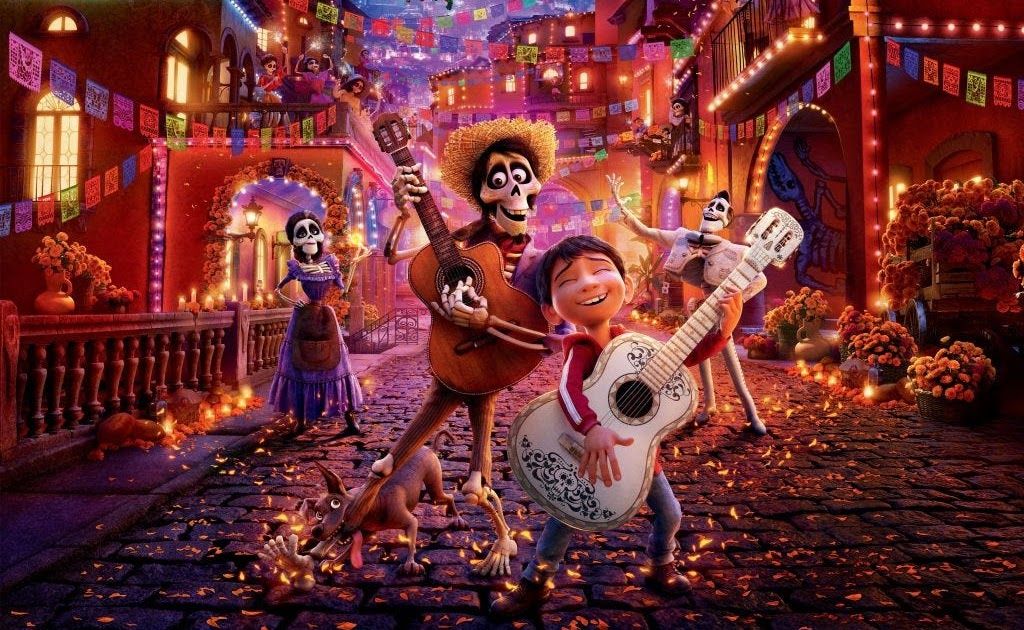In the ever-evolving landscape of cinema, where spectacle often overshadows subtlety, a fascinating subgenre emerged in the early 2000s, quietly challenging conventional narrative structures and production norms. This movement, playfully dubbed ‘Mumblecore,’ has captivated audiences and critics alike with its unpolished authenticity, marking a significant departure from the glossy, high-budget productions that typically dominate the film industry. Far from a passing fad, Mumblecore has not only carved out a distinctive niche but has also significantly influenced how we perceive storytelling, character development, and the very craft of filmmaking itself.
At its core, Mumblecore is a subgenre of independent film defined by several key characteristics: naturalistic acting, often improvised dialogue, deliberately low budgets, and a pronounced emphasis on conversation over intricate plotlines. These films predominantly center on the personal relationships and existential quandaries of young adults, typically in their twenties and early thirties, who frequently grapple with aimlessness in both their professional and personal lives. The aesthetic is raw and intimate, mirroring real-world interactions with all their inherent awkwardness and emotional complexities, creating a cinematic experience that feels both deeply personal and universally relatable.
Our journey into the world of Mumblecore will peel back the layers of this compelling movement, from its accidental coinage at a film festival to its lasting imprint on contemporary cinema. We’ll delve into the distinctive traits that make a Mumblecore film recognizable, explore the pioneering filmmakers who championed its vision, and analyze how its unique approach to storytelling offers a potent antidote to mainstream fare. Prepare to discover why this unpretentious, yet profoundly magnetic, genre has not only resonated with film aficionados but continues to reshape the contours of independent filmmaking.
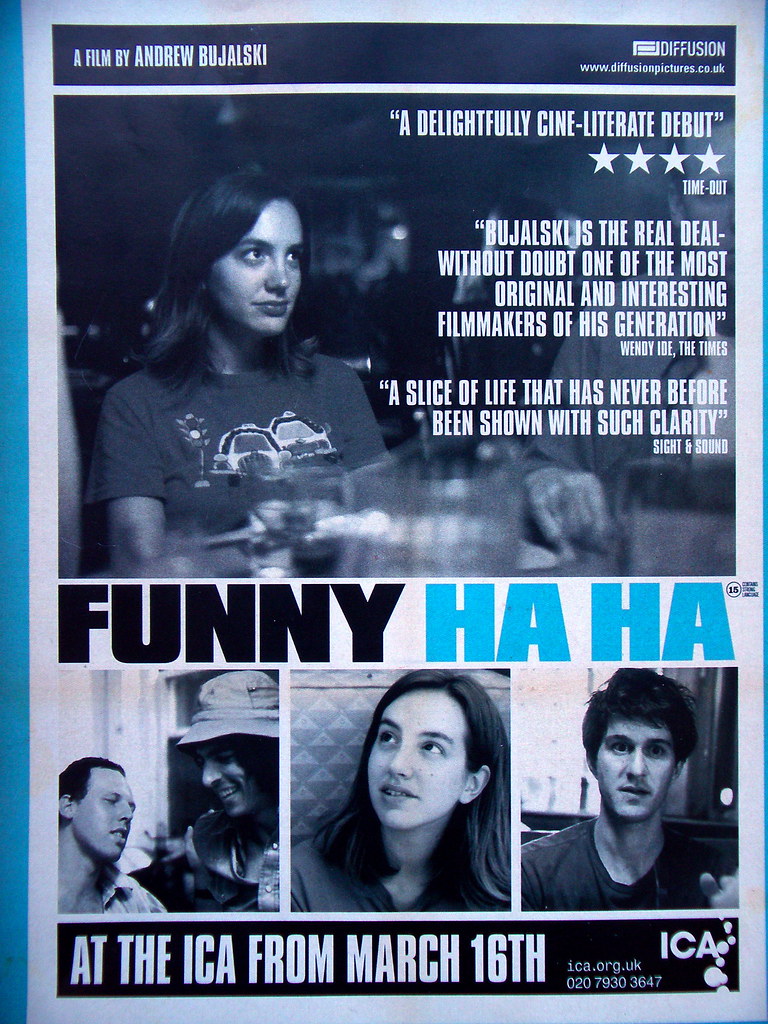
1. Funny Ha Ha (2002)
Andrew Bujalski’s 2002 directorial debut, “Funny Ha Ha,” is widely regarded as the inaugural Mumblecore film, a foundational text that set the stage for the entire movement. Bujalski, often described as the “Godfather of Mumblecore,” crafted a narrative that perfectly encapsulated the burgeoning genre’s ethos. The film introduces us to a young woman navigating the often-awkward passage from post-college life into the uncertainties of adulthood, grappling with matters of love, employment, and self-discovery in a manner that feels remarkably genuine and unforced.
The screenplay, also penned by Bujalski, masterfully employs naturalistic dialogue, reflecting the everyday conversations filled with hesitations, half-formed thoughts, and the authentic linguistic quirks that define real human interaction. This deliberate choice to prioritize dialogue over a conventional, fast-paced plot allows the audience to immerse themselves deeply in the character’s inner life and external struggles. The film eschews traditional dramatic arcs, opting instead for a more slice-of-life approach, where conflicts arise from the subtle nuances of relationships rather than grand external events.
“Funny Ha Ha” serves as a potent example of Mumblecore’s low-budget, DIY filmmaking approach. Shot on film, a notable deviation from later digital Mumblecore trends, it showcases the genre’s commitment to capturing reality with minimal artifice. The performances feel almost documentary-like in their realism, driven by actors who embody their roles with an understated sincerity. This early work by Bujalski established a blueprint for the movement, signaling a shift towards intimate, character-focused storytelling that would resonate deeply with a new generation of independent filmmakers.
The film’s logline succinctly captures its essence: “A young woman navigates the awkward waters of post-college life, love, and employment in this seminal Mumblecore film that feels almost documentary-like in its realism.” It’s an intimate portrait of a transitional period, allowing viewers to vicariously experience the challenges and small triumphs of finding one’s footing. Through its unpretentious lens, “Funny Ha Ha” cemented its place as not just the first, but a profoundly influential, Mumblecore masterpiece, demonstrating the power of authenticity in cinematic narrative.
Read more about: From Legendary Icons to Modern Muses: 11 Redheaded Actresses Who’ve Lit Up Hollywood and Stolen Our Hearts
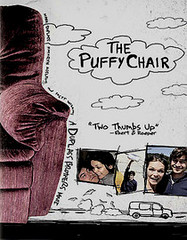
2. The Puffy Chair (2005)
“The Puffy Chair,” released in 2005, stands as another quintessential Mumblecore film, a product of the creative synergy between the Duplass brothers, Mark and Jay Duplass, who also penned the screenplay. This film was a pivotal work screened at the 2005 South by Southwest Film Festival, an event famously noted as the birthplace of the term “mumblecore” itself. Its inclusion alongside Bujalski’s “Mutual Appreciation” and Joe Swanberg’s “Kissing on the Mouth” defined the nascent genre for sound editor Eric Masunaga, who coined the term at a bar during the festival.
The narrative follows a road trip undertaken by a man, his girlfriend, and his brother, centered around the seemingly mundane task of delivering a giant purple chair. However, this seemingly simple premise quickly unravels into an introspective journey, expertly exploring the intricate dynamics of personal relationships and family bonds. The film thrives on the naturalistic, often improvised dialogue that is a hallmark of Mumblecore, allowing the actors to bring an organic, unscripted quality to their interactions, making the conversations feel authentically lived-in.
“The Puffy Chair” showcases the DIY filmmaking approach that is intrinsic to the Mumblecore aesthetic, characterized by low production costs and a focus on intimate, character-driven storytelling. The emotional complexities and sometimes awkward truths of human connection are brought to the forefront, highlighting the genre’s dedication to realism over conventional dramatic flair. The film’s characters, much like those in other Mumblecore works, are often single, white, and in their twenties or early thirties, grappling with the ambiguities of their lives.
This film, with its unassuming yet profound exploration of modern relationships, perfectly illustrates Mumblecore’s ability to extract deep emotional resonance from everyday scenarios. The journey with the oversized chair becomes a metaphor for the cumbersome baggage of personal history and evolving relationships, providing a candid look at characters who are simultaneously striving for connection and wrestling with their inability to articulate their deepest desires. It’s a testament to the power of low-budget cinema to deliver high emotional impact, solidifying its status as a must-see Mumblecore entry.

3. Mutual Appreciation (2005)
Andrew Bujalski’s second feature film, “Mutual Appreciation,” released in 2005, further solidified his reputation as a pioneering voice within the Mumblecore movement. Like “The Puffy Chair,” this film was also a prominent feature at the 2005 South by Southwest Film Festival, contributing significantly to the collective identity that led to the coining of the “mumblecore” term. Bujalski’s screenplay again showcases his distinctive voice, delivering a dialogue-driven narrative that resonates with profound authenticity and observational acuity.
The film centers on a struggling musician attempting to navigate the precarious landscape of artistic pursuit and personal connection in New York City. Through his experiences, the narrative intricately explores the complexities of friendship, romantic love, and the often-frustrating quest for artistic recognition. The characters’ interactions are imbued with the naturalistic performances and improvised dialogue that are trademarks of the genre, creating a sense of intimate realism that draws the audience into their world with remarkable immediacy.
“Mutual Appreciation” embodies the minimalist approach to filmmaking that Mumblecore champions. Shot on film, much like “Funny Ha Ha,” it eschews high production values in favor of capturing the unvarnished realities of its characters’ lives. The film’s low budget allows for an unpretentious aesthetic, where the focus remains steadfastly on the intricate emotional lives and conversational exchanges of its protagonists. This dedication to raw, unfiltered portrayal defines its artistic integrity.
This film stands as a testament to Mumblecore’s capacity to delve into the inner lives of young adults facing the existential challenges of finding purpose and connection. The “mumbling characters” and their candid discussions, even when seemingly aimless, reveal a profound search for meaning and authentic relationships. “Mutual Appreciation” is more than just a film; it is a profound cinematic experience that continues to influence subsequent generations of independent filmmakers seeking to tell stories with honesty and a deep understanding of the human condition, solidifying Bujalski’s position at the forefront of the movement.
Read more about: Beyond the Hype: 11 Unbeatable Sports Cars for Budget-Conscious Enthusiasts Seeking Long-Term Reliability and Driving Thrills
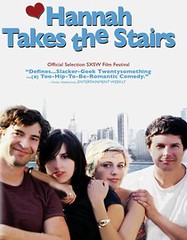
4. Hannah Takes the Stairs (2007)
“Hannah Takes the Stairs,” released in 2007, represents a crucial development in the Mumblecore movement, not only through its collaborative screenplay—co-written by Joe Swanberg, Greta Gerwig, and Kent Osborne—but also as a notable film shown during the IFC Center’s 2007 “The New Talkies: Generation D.I.Y.” series. This film series was a significant moment for the genre, publicly exhibiting a collection of Mumblecore works that included this key entry. It’s a compelling example of how the movement’s creative community often blurred the lines between acting, writing, and directing.
The film delves into the professional and romantic life of a young intern whose personal boundaries become increasingly fluid as she finds herself entangled with three distinct co-workers. This intricate web of relationships provides fertile ground for exploring the fluidity of modern romance and the often-unpredictable journey of self-discovery. The narrative embraces the Mumblecore signature of naturalistic dialogue, often improvised, allowing the characters’ interactions to unfold with an organic, true-to-life feel that captures the messy reality of young adulthood.
As with other films in the genre, “Hannah Takes the Stairs” prioritizes character and relationship dynamics over a traditional, tightly structured plot. The emotional textures are rich, drawn from the subtle shifts in rapport and the unspoken desires that permeate the characters’ lives. The film exemplifies the DIY filmmaking approach, utilizing low production costs and a collaborative spirit among its cast and crew. This minimalist aesthetic, combined with authentic performances, allows the audience to feel like a fly on the wall, observing intimate moments of confusion and connection.
“Hannah Takes the Stairs” is particularly significant for featuring Greta Gerwig, a major figure often associated with Mumblecore, who has since transitioned to more mainstream success while retaining elements of the genre’s character-driven focus. Her involvement in crafting the screenplay and her performance contribute to the film’s reputation as an influential work that deftly captures the existential angst and relational complexities of a generation. It’s an essential watch for understanding Mumblecore’s evolution and its collaborative spirit, showcasing the profound impact of shared creative vision.
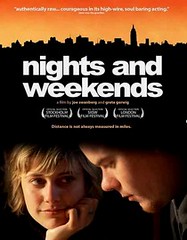
5. Nights and Weekends (2008)
Co-written and co-directed by Greta Gerwig and Joe Swanberg, two of Mumblecore’s most recognizable figures, “Nights and Weekends” offers a profoundly raw and intimate portrayal of a long-distance relationship. The film focuses intently on the complexities and emotional demands of maintaining a connection across geographical divides, expertly capturing the ebb and flow of intimacy and distance between a couple. This collaborative effort exemplifies the tight-knit community and shared creative vision often found among Mumblecore pioneers.
The narrative is deeply rooted in the genre’s commitment to naturalistic dialogue, frequently improvised, allowing for an unfiltered exploration of the characters’ inner lives and their struggle to articulate their desires. Such conversational authenticity creates a sense of profound relatability, drawing viewers into the characters’ most vulnerable moments. The film, much like its Mumblecore predecessors, prioritizes the intricate nuances of personal relationships over conventional plot progression.
“Nights and Weekends” functions as a powerful testament to the Mumblecore aesthetic, employing minimal production values to highlight the intense emotional realities at play. Its focus on the difficulties inherent in romantic relationships, exacerbated by physical separation, mirrors the recurring themes of aimlessness and relational ambiguity seen in many Mumblecore works. The film feels less like a constructed narrative and more like a candid observation of two individuals grappling with love, longing, and the challenges of modern connection.
The collaboration between Gerwig and Swanberg on this project is particularly significant, underscoring the communal spirit that characterized the early Mumblecore movement. Their shared understanding of the genre’s strengths—its ability to transform mundane settings and everyday conversations into profound emotional experiences—is evident throughout the film. It remains a crucial entry for understanding the genre’s capacity for emotional depth through minimalist means.

6. Humpday (2009)
Lynn Shelton’s 2009 feature, “Humpday,” stands as a pivotal Mumblecore film, venturing into the provocative yet ultimately tender exploration of male friendship and personal boundaries. Penned by Shelton herself, the film challenges conventional narratives by having two straight male friends dare each other into starring in an amateur gay porn film, a premise that skillfully highlights the genre’s willingness to engage with uncomfortable truths and relational complexities through a naturalistic lens.
The strength of “Humpday” lies in its character-driven approach and the often-improvised dialogue that forms the backbone of its interactions. This style allows for a deeply authentic portrayal of male bonding, insecurity, and the humor found in awkward social situations. Shelton, a director associated with the Mumblecore genre, masterfully navigates the emotional landscape of her characters, making their anxieties and unspoken desires palpable to the audience.
The film meticulously dissects the nature of friendship, pushing its boundaries in a way that feels both humorous and profoundly poignant. It captures the essence of Mumblecore by centering on characters in their twenties and early thirties who are grappling with their identities and relationships, particularly their “inability to articulate their own desires.” The low-budget, intimate production style further enhances the sense of realism, making the characters’ predicament feel remarkably vivid.
“Humpday” is a brilliant example of how Mumblecore’s focus on raw human interaction can be applied to explore sensitive and unconventional themes. It demonstrates the genre’s capacity to extract significant emotional resonance from everyday, albeit unusual, scenarios, solidifying its place as a thought-provoking and essential entry in the Mumblecore canon. Shelton’s deft direction ensures the film remains true to the genre’s spirit while expanding its thematic scope.

7. Drinking Buddies (2013)
Joe Swanberg’s 2013 film, “Drinking Buddies,” marks a significant moment in the evolution of Mumblecore, showcasing the genre’s capacity to integrate more professional actors without sacrificing its foundational principles. The screenplay, also by Swanberg, delves into the intricate romantic and platonic relationships between colleagues at a craft brewery, blurring the lines between friendship and something deeper with remarkable subtlety and realism. This film stands as a testament to Mumblecore’s enduring appeal and its ability to attract wider talent.
One of the distinguishing features of “Drinking Buddies” is its inclusion of major stars such as Anna Kendrick, a move that exemplifies how “later films have had more professional actors.” Yet, despite the presence of well-known performers, the film meticulously adheres to Mumblecore’s commitment to ultra-low budgets and quick shoots, often completed within a couple of weeks. The cast is given substantial freedom with the dialogue, preserving the improvised, naturalistic feel that defines the genre.
The narrative skillfully explores the complexities of romantic attraction and relationships among young adults navigating their personal and professional lives. The characters, like many in Mumblecore, often find themselves fairly aimless, wrestling with their own desires and the challenges of communication. This focus on the internal lives and relational dynamics, rather than a rigid plot, allows for a deeply immersive and relatable cinematic experience.
“Drinking Buddies” effectively demonstrates that Mumblecore is not solely confined to non-professional actors or extremely niche productions. It highlights the genre’s maturity, proving it can scale its authentic, character-driven storytelling to include more recognized talent while maintaining its core aesthetic. This film is crucial for understanding how Mumblecore’s influence began to ripple into slightly larger productions, offering a potent blend of indie sensibilities and broader appeal.
Read more about: Bottoms Up! 11 Must-Watch Movies That Are Absolutely Perfect for Your Next 3-Beers-Deep Marathon
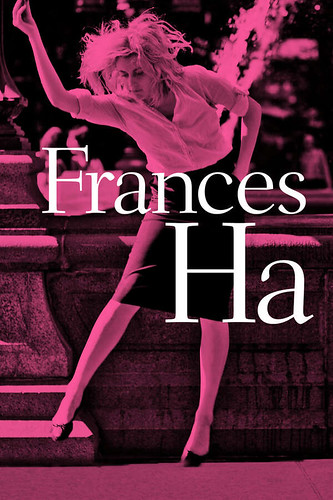
8. Frances Ha (2012)
Released in 2012, “Frances Ha,” co-written by Noah Baumbach and Greta Gerwig, stands as a quintessential “post-mumblecore” work, embodying the genre’s character-driven focus even as Gerwig transitioned to more mainstream success. The film presents a captivating, black-and-white ode to modern bohemian life, following an aspiring New York-based dancer who, ironically, “doesn’t dance,” as she navigates the trials of life, friendship, and unfulfilled dreams in her twenties.
Gerwig’s significant involvement in the screenplay and her lead performance are central to the film’s resonance. She is a “major figure often associated with Mumblecore” who has skillfully retained elements of the genre’s intimate, character-focused storytelling in her subsequent projects. “Frances Ha” effectively captures the existential angst and relational complexities of a generation, a theme consistently explored in Mumblecore films.
The film’s distinct aesthetic, shot in black and white, lends it a timeless quality while emphasizing its focus on character and dialogue rather than visual spectacle. It delves into the nuances of female friendships and the often-awkward passage into adulthood, echoing Mumblecore’s preoccupation with the personal relationships of young adults and their struggle to find purpose. The narrative is deeply relatable, reflecting the candid discussions and search for meaning that define the genre.
“Frances Ha” serves as a critical bridge, illustrating how the raw, authentic spirit of Mumblecore can evolve into more polished, critically acclaimed works. Its exploration of friendship dynamics, the search for identity, and the bittersweet realities of young adulthood resonates powerfully, cementing its status as an influential work that showcases the enduring legacy of the Mumblecore sensibility, even as its pioneers broaden their artistic horizons.
Read more about: Fuhgeddaboudit! Unpacking the Absolute Worst Movies of All Time That Critics Gave a Big Fat 0%

9. Blue Jay (2016)
Mark Duplass’s 2016 screenplay, “Blue Jay,” exemplifies the enduring appeal and continued evolution of Mumblecore’s core tenets, even several years into what some critics describe as the “post-mumblecore” era. The film offers an intensely intimate and nostalgic look at two high school sweethearts who reunite by chance in their hometown, leading to a profound 24-hour reconnection that reignites old feelings and memories, all rendered with the genre’s signature authenticity.
As a major figure within Mumblecore, Mark Duplass continues to champion the low-budget, character-driven storytelling that defined the movement. “Blue Jay” thrives on its naturalistic dialogue and the genuine chemistry between its leads, capturing the subtle emotional shifts and unspoken history between the characters. The film’s minimalist setting, largely confined to a small town, enhances the focus on the intricate dynamics of their rekindled relationship.
The narrative is a masterclass in extracting deep emotional resonance from an everyday scenario – a chance encounter – allowing the audience to feel like a privy observer to a deeply personal and reflective experience. This aligns perfectly with Mumblecore’s emphasis on conversation over intricate plotlines and its exploration of the complexities of romantic relationships and the difficulty characters often face in articulating their true desires.
“Blue Jay” is a poignant reminder of Mumblecore’s lasting impact, demonstrating that the genre’s strengths—its intimacy, authenticity, and profound focus on human connection—continue to resonate powerfully. It showcases how these films, even in later years, can provide a candid and heartfelt look at characters grappling with their past, present, and the enduring nature of love and friendship, proving the genre’s themes are as timeless as they are deeply human.
Read more about: DOROTHY’s Unyielding Spirit: Charting the American Rock Band’s Journey, Evolution, and Enduring Impact on Modern Music
As we conclude our journey through the seminal works of Mumblecore, it becomes clear that this unassuming, yet profoundly magnetic, genre is far more than a collection of low-budget films or a transient trend. It represents a significant shift in cinematic storytelling, championed by filmmakers who prioritized raw authenticity, naturalistic performances, and a deep dive into the everyday anxieties and relationships of young adults. Mumblecore has not only carved out a distinctive niche within independent cinema but has also left an indelible mark on the broader film landscape, influencing everything from mainstream comedies to acclaimed television series. Its legacy is a testament to the power of unpretentious filmmaking, proving that compelling narratives don’t require immense budgets, but rather an honest lens focused on the messy, beautiful reality of the human condition.

